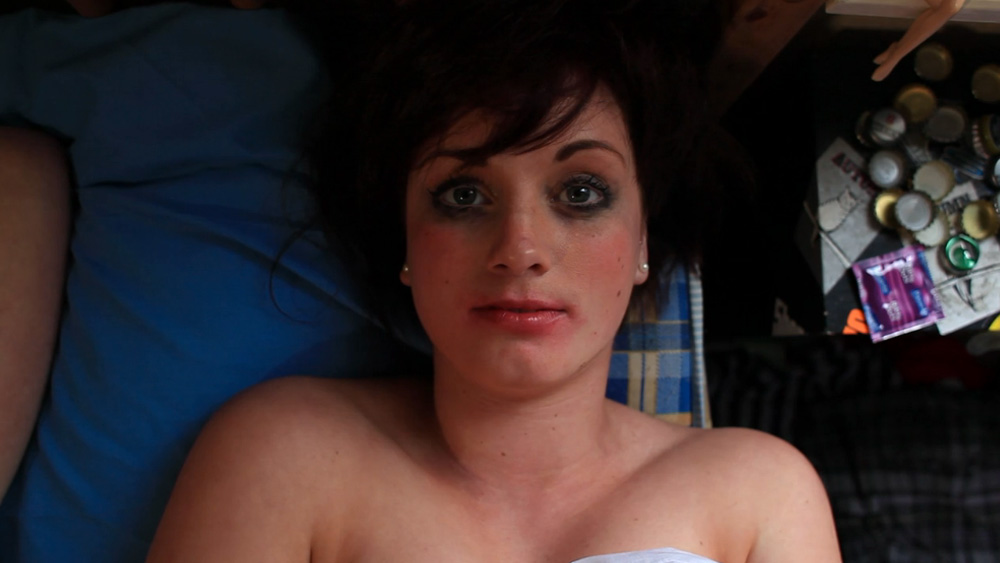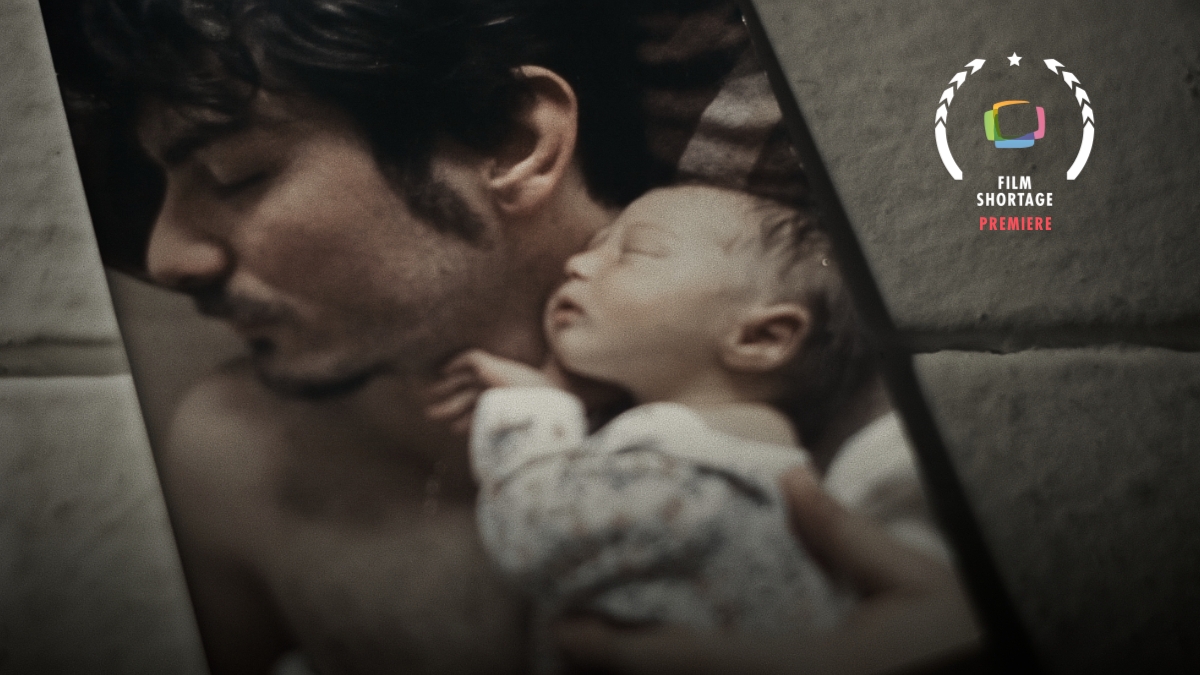Hiding in a bedroom closet, an embattled teenager comforts his younger sister and discusses the purpose of fireflies before finding a solution to his family’s misery.
“Fireflies Save The Night,” directed by A.J. Riggins, is a captivating and emotionally resonant short film that delves into the themes of resilience and familial love. The story centers around an embattled teenager who, amidst the turmoil of family struggles, seeks refuge in the confines of a bedroom closet alongside his younger sister. As they share a tender moment, discussing the significance of fireflies, the film unfolds into a poignant exploration of finding hope and solace in the midst of darkness.
With its soft, intimate tone and touching narrative, “Fireflies Save The Night” effectively conveys the sense of isolation and vulnerability experienced by the siblings, immersing the audience in their world. Through its portrayal of familial bonds and the resilience of the human spirit, the film offers a powerful reminder of the strength found in love and connection, making it a truly compelling cinematic experience.
Can you discuss the inspiration behind this intimate setting and the significance of using such a confined space to convey the characters’ emotional journey?
The inspiration behind this setting stems from the childhood experience of finding safety and escape within the confines of a bedroom closet. This space often served as a realm where imaginative worlds were born, a go-to spot during a hide-and-seek game, and a sense of safety amidst external tensions. In this story, I wanted to echo this notion by creating two distinct worlds for the characters—one within the closet, symbolizing security and refuge from external turmoil, and the other representing the harsher realities beyond its walls.
This confined space acts as their sanctuary, a place where they can be themselves without the weight of the outside world bearing down on them. It also serves as a canvas to depict the intricate dynamics of sibling relationships, showcasing the ebbs and flows inherent in family dynamics.
What motivated you to tell this particular story, and how did you approach balancing the emotional depth of the narrative with the simplicity of its premise?
The motivation behind telling this particular story derives from a broader world-building effort and a collection of short projects that support a feature-length screenplay I’ve written. My creative focus often delves into exploring the intricacies of family dynamics, particularly within the backdrop of the American South. At its essence, this story revolves around sibling care—an aspect I find deeply resonant and significant in shaping our adult identities.
Sibling relationships are a fundamental part of our growth journey. A sibling uniquely understands our personal transformations and the underlying reasons behind our reactions, whether deemed right or wrong. Through the lens of authentic experiences within these relationships, such as playful games and the curious exploration of family dynamics, Fireflies Save The Night delves into the essence of protection and emotional preservation that siblings instinctively seek for each other.
In terms of balancing emotional depth with a simple premise, I approached it by anchoring the narrative in relatable experiences and universal truths. Integrating complex emotions within the storyline to create a compelling experience for the audience.
Can you discuss your approach to building tension throughout the film, particularly in the later stages, and how you maintained a consistent tone to enhance the audience’s engagement?
Our approach to building tension throughout the film, particularly in its later stages, was centered on subverting expectations and crafting a narrative that gradually intensified toward the climax. We deliberately introduced a more traditional setup to soothe the audience into a sense of familiarity. However, beneath this surface, we planted small seeds of tension throughout the first half of the film. These hints qualified the escalating tension and provided nuanced reasons for the protagonists’ actions, whether right or wrong.
As the story progressed, we shifted our focus towards employing camera movements and a meticulously crafted soundscape in the film’s latter half. These elements were critical in paying off the tension that had been steadily building within the confined space of the closet. Importantly, we recognized that in these crucial moments, where dialogue may have less impact, the visual and auditory cues were essential in maintaining the audience’s engagement. Ultimately, our goal was to lead the audience to the point of catharsis alongside the protagonist, where the culmination of tension and emotional investment reached a resolution.
“Fireflies Save the Night” incorporates the symbolism of fireflies as a source of comfort and hope for the characters. What inspired this choice, and how did you use this imagery to convey the themes of resilience and finding light in darkness?
The choice to incorporate fireflies as a symbolic element was inspired by a dual purpose. Firstly, I sought a metaphorical device that could embody Toine’s sense of isolation and his yearning for freedom from his confined world. The trapped firefly served as a poignant representation of this overarching theme of hope amidst adversity. Secondly, drawing from my personal experiences growing up in the rural South, I wanted to pay homage to the nostalgic ritual of chasing fireflies during sunset hours and capturing them in mason jars—a Southern rite of passage.
The rule of three was particularly significant in my storytelling approach. Initially, I used the firefly to establish Toine’s internal world and mindset through subtle shots featuring the firefly. However, as the narrative progressed, the firefly evolved to symbolize more than just a visual motif—it became synonymous with Toine’s goal to find light even in the darkest of times.
Can you discuss the creative process behind bringing the story to life, including the collaboration with the cast and crew to capture the essence of the narrative?
The creative process behind bringing “Fireflies Save the Night ” to life was a culmination of lived experiences, collaborative efforts, and a deep immersion into Toine’s character, which had been evolving across multiple projects. Having previously explored Toine’s character in two short projects and actively working on a feature screenplay centered around him, I was able to channel that familiar energy and emotional depth into this specific narrative, focusing on themes of shadow work and personal growth.
Collaboration played a pivotal role throughout the entire process. I’ve been fortunate to work with a talented and dedicated team who have been on this filmmaking journey with me. Right from the outset, it was a collaborative effort across all departments. Despite the geographical separation of our lead actors, we utilized a six-week virtual rehearsal period to organically develop their relationship, fostering a sibling-like friendship that translated seamlessly onto the screen during principal photography.
Recognizing the creative and logistical challenges, especially while working with minors in emotionally intense scenes, my producing partners, Miles McKeller-Smith and Katie Sanderson, prioritized creating a safe and supportive environment for our cast to navigate the emotional weight of the story. Over-communication was key in this regard. We provided a comprehensive creative prospectus to all departments, outlining the vision while also encouraging their creative input and expertise, fostering a collaborative spirit that enriched the film’s overall essence and authenticity.
How did you approach crafting the visual and auditory elements of the film to evoke a sense of immersion and emotional resonance?
Collaborating with DP Jamal Solomon, our approach to crafting the visual elements was centered on creating a deeply immersive experience that resonated emotionally with the audience. In the film’s first half, our goal was to convey a sense of safe entrapment, emphasizing close-ups and detailed shots of the characters’ reactions and gestures. This visual intimacy became the cornerstone of this sequence, allowing the audience to connect intimately with the sibling relationship and the security they found in each other. In terms of sound, I aimed to capture the natural, unglamorized reactions to the tension seeping through the walls. We achieved this by filming primarily on stable camera setups with tighter lenses, accompanied by a softer score and dialogue punctuated with muted breaks, enhancing the weight and intimacy of the scenes.
Transitioning into the film’s second half, our focus shifted towards establishing a new setting and a reversal of tone, character, and genre. Working closely with editors CJ Duncan and Zachary Smith, we aimed to craft a suspenseful sequence using extended one-shot takes with strategic cuts through the interior and exterior, introducing the audience to a fresh perspective and ultimately revealing our protagonist’s choice. To heighten the suspense and tension, we incorporated a more eerie score and sound design, extending the world beyond the confines of the closet and carrying the narrative forward with intrigue and anticipation.
As a filmmaker, what do you hope audiences will take away from their experience of watching “Fireflies Save the Night,” and how do you envision the film contributing to broader discussions about family dynamics and the human experience?
My hope is that audiences will resonate with the themes explored and find personal connections within the narrative. At its core, the film delves into the profound significance of sibling relationships and the impact of navigating a fight-or-flight world. While the story holds personal meaning for me, I hope it sheds light on universal experiences, allowing viewers to see themselves reflected, even in the subtlest of ways. As an advocate for authenticity in storytelling, especially within the Southern microcosm, I envision “Fireflies Save the Night” contributing to these important conversations, offering a nuanced portrayal of familial relationships and the emotional landscapes that shape us.
What are your favorite short films?
MULTI-FACIAL (dir. Vin Diesel, 1995)
LITTLE BROWN BOY (dir. Barry Jenkins, 2003)
WHIPLASH (dir. Damien Chazelle, 2013)
THE COUNSELOR (dir. Guy Bauer, 2016)
WHISPER (dir. Julian Terry, 2017)




